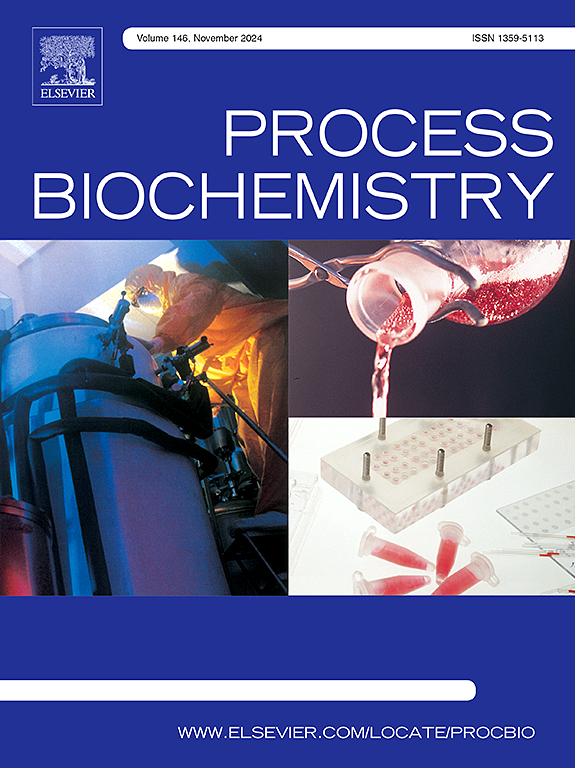基于机制的天然山酮醛糖还原酶抑制:糖尿病并发症的计算和实验见解
IF 3.7
3区 生物学
Q2 BIOCHEMISTRY & MOLECULAR BIOLOGY
引用次数: 0
摘要
醛糖还原酶(AR)在多元醇途径中起着关键作用,是预防糖尿病并发症的关键治疗靶点。在这项研究中,我们采用了一种多学科的方法——结合硅分子模型和体外酶测定——从六种天然存在的山酮衍生物中鉴定出有效的AR抑制剂。对接、分子动力学模拟和MM/PBSA计算显示,garcinone E、norathyriol和smeathxanthone A与AR结合位点的关键残基表现出最强的结合亲和力和稳定的相互作用。自由能景观分析进一步强调了它们在低能构象状态下稳定AR的能力,降低了酶的柔韧性。ADMET分析表明,去甲氧基三醇、白莉二福林和1-羟基-3,5,6,7-四甲基氧基山酮具有良好的药代动力学特性,包括高胃肠道吸收和符合利平斯基五定律,而芒果苷具有较差的生物利用度和渗透性。体外验证证实了强力的抑制活性garcinone E (IC₅₀= 4.66 ±0.21 µM), norathyriol (IC₅₀= 5.75 ±0.36 µM),和smeathxanthone (IC₅₀= 7.92 ±1.12 µM),与槲皮素(IC₅₀= 2.46 µM)。酶动力学表明,garcinone E和smeathxanthone A作为非竞争性抑制剂,而norathyriol表现出混合抑制作用,表明其结合机制不同,增强了其疗效。总的来说,这些山酮代表了通过调节多元醇途径减轻糖尿病神经病变、视网膜病变和肾病的有希望的口服先导物。未来的工作将集中在合理的结构优化,糖尿病模型的体内验证,以及全面的临床前安全性分析,以推进这些化合物的临床开发。本文章由计算机程序翻译,如有差异,请以英文原文为准。
Mechanism-based inhibition of aldose reductase by natural xanthones: Computational and experimental insights for diabetic complications
Aldose reductase (AR) plays a pivotal role in the polyol pathway and is a key therapeutic target for preventing diabetic complications. In this study, we employed a multi-disciplinary approach—combining in silico molecular modelling and in vitro enzyme assays—to identify potent AR inhibitors from six naturally occurring xanthone derivatives. Docking, Molecular dynamics simulation, and MM/PBSA calculations revealed that garcinone E, norathyriol, and smeathxanthone A demonstrated the strongest binding affinities and stable interactions with critical residues in the AR binding site. Free energy landscape analysis further highlighted their ability to stabilize AR in low-energy conformational states, reducing enzyme flexibility. ADMET profiling indicated that norathyriol, bellidifolin, and 1-hydroxy-3,5,6,7-tetramethoxyxanthone exhibit favourable pharmacokinetic properties, including high gastrointestinal absorption and compliance with Lipinski’s rule of five, whereas mangiferin displayed poor bioavailability and permeability. In vitro validation confirmed the potent inhibitory activity of garcinone E (IC₅₀ = 4.66 ± 0.21 µM), norathyriol (IC₅₀ = 5.75 ± 0.36 µM), and smeathxanthone A (IC₅₀ = 7.92 ± 1.12 µM), comparable to quercetin (IC₅₀ = 2.46 µM). Enzyme kinetics revealed that garcinone E and smeathxanthone A act as non-competitive inhibitors, while norathyriol shows mixed inhibition, suggesting diverse binding mechanisms that enhance their efficacy. Collectively, these xanthones represent promising oral leads for attenuating diabetic neuropathy, retinopathy, and nephropathy by modulating the polyol pathway. Future work will focus on rational structural optimisation, in vivo validation in diabetic models, and comprehensive pre-clinical safety profiling to progress these compounds toward clinical development.
求助全文
通过发布文献求助,成功后即可免费获取论文全文。
去求助
来源期刊

Process Biochemistry
生物-工程:化工
CiteScore
8.30
自引率
4.50%
发文量
374
审稿时长
53 days
期刊介绍:
Process Biochemistry is an application-orientated research journal devoted to reporting advances with originality and novelty, in the science and technology of the processes involving bioactive molecules and living organisms. These processes concern the production of useful metabolites or materials, or the removal of toxic compounds using tools and methods of current biology and engineering. Its main areas of interest include novel bioprocesses and enabling technologies (such as nanobiotechnology, tissue engineering, directed evolution, metabolic engineering, systems biology, and synthetic biology) applicable in food (nutraceutical), healthcare (medical, pharmaceutical, cosmetic), energy (biofuels), environmental, and biorefinery industries and their underlying biological and engineering principles.
 求助内容:
求助内容: 应助结果提醒方式:
应助结果提醒方式:


